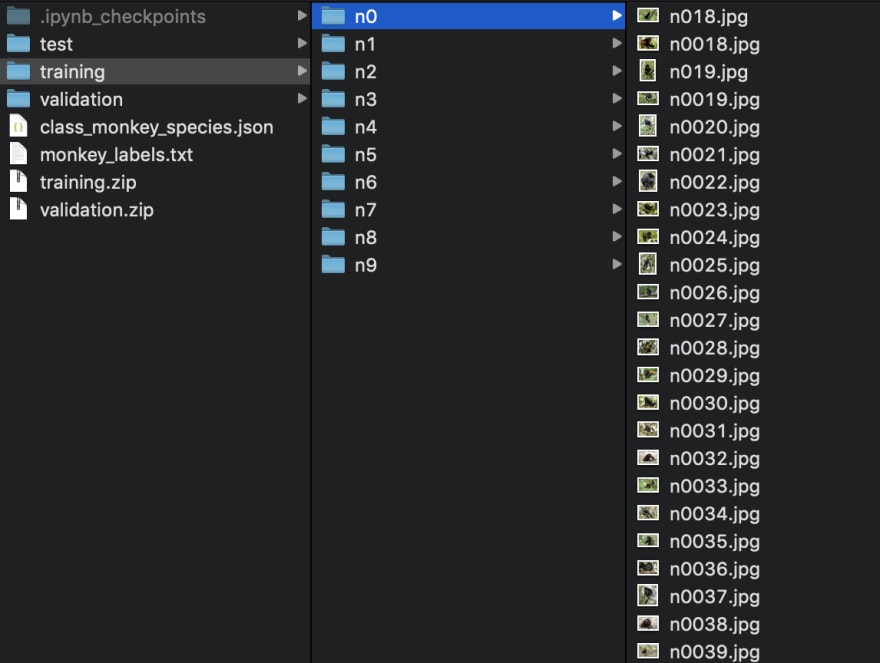


Mxnet also has a built-in augmentation library called Transforms ( .transforms). Trainset = Dataloader(train= True, csv= '/path/to/file/', transform=aug) Transforms in MxNet from torchvision import transformsįrom ansforms import Compose as Cĭef aug (p= 0.5): return C(, p=p)Ĭlass Dataloader (object): def _init_ (self, train, csv, transform=None):ĭef _len_ (self): return len(self.image_list)
#Keras image data generator how to
Let’s see how to apply augmentations via Transforms if you are doing so.

Sometimes you might want to write a custom Dataloader for the training. from torchvision import transforms as trįrom ansfroms import Compose That is why you should either read an image in PIL format or add the necessary transformation to your augmentation pipeline.

You should keep in mind that Transforms works only with PIL images. Let’s see how to apply augmentations using Transforms. 💡 How to Keep Track of PyTorch Lightning Experiments With Neptune It’s used mostly with PyTorch as it’s considered a built-in augmentation library. It might be really useful if you are building a more complex augmentation pipeline, for example, in the case of segmentation tasks.īesides that, Transforms doesn’t have a unique feature. It has various functional transforms that give fine-grained control over the transformations. Just check the official documentation and you will certainly find the augmentation for your task.Īdditionally, there is the module. You can combine them by using Compose method. Functionally, Transforms has a variety of augmentation techniques implemented. Transforms library contains different image transformations that can be chained together using the Compose method.
#Keras image data generator install
To install Transforms you simply need to install torchvision: pip3 install torch torchvision Transforms library is the augmentation part of the torchvision package that consists of popular datasets, model architectures, and common image transformations for Computer Vision tasks. 👉 How to Track Model Training Metadata with Neptune-Keras Integration Data Augmentation in PyTorch and MxNet Transforms in Pytorch 👉 Keras Metrics: Everything You Need To Know 👉 Keras Loss Functions: Everything You Need To Know ( 0.2)])Īugmented_image = data_augmentation(image) data_augmentation = tf.keras.Sequential([ Keras preprocessingĪs mentioned above, Keras has a variety of preprocessing layers that may be used for Data Augmentation. If you want to read more on the topic please check the official documentation or other articles. TensorFlow API has plenty of augmentation techniques. Of course, that is just the tip of the iceberg. (train_ds, val_ds, test_ds), metadata = tfds.load( Image = tf.image.random_brightness(image, max_delta= 0.5) Image = tf.image.random_crop(image, size=) In most cases it is useful to apply augmentations on a whole dataset, not a single image. Still, you should keep in mind that you can augment the data for the ML problems as well.įor finer control you can write your own augmentation pipeline. That is why throughout this article we will mostly talk about performing Data Augmentation with various DL frameworks. In general, DA is frequently used when building a DL model. It means that Data Augmentation is also good for enhancing the model’s performance. However, we can improve the performance of the model by augmenting the data we already have. In general, having a large dataset is crucial for the performance of both ML and Deep Learning ( DL) models. Let’s make this clear, Data Augmentation is not only used to prevent overfitting. It is a good practice to use DA if you want to prevent overfitting, or the initial dataset is too small to train on, or even if you want to squeeze better performance from your model. Best practices, tips, and tricks What is Data Augmentation?ĭata Augmentation is a technique that can be used to artificially expand the size of a training set by creating modified data from the existing one.


 0 kommentar(er)
0 kommentar(er)
